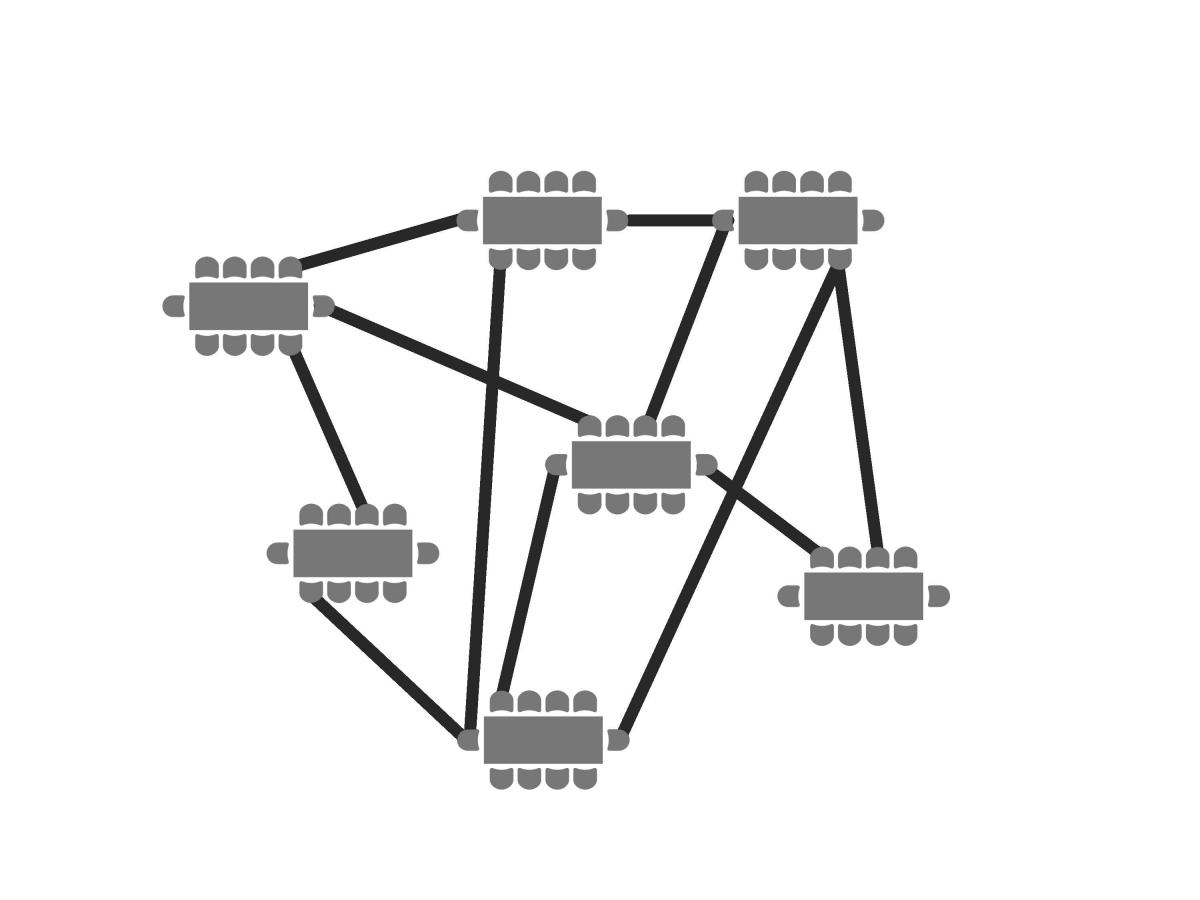 “A board of directors network presents a multitude of interesting characteristics,” he said. “The nodes are the organizations, and the ties are the board members who facilitate the connection between the two boards, thus creating a network consisting of two different entities with possibly diverging interests and agendas.”—Panagiotis Giannakis
“A board of directors network presents a multitude of interesting characteristics,” he said. “The nodes are the organizations, and the ties are the board members who facilitate the connection between the two boards, thus creating a network consisting of two different entities with possibly diverging interests and agendas.”—Panagiotis Giannakis
Panagiotis Giannakis joined the Department of Geography and the John A. Dutton e-Education Institute in summer 2019 as an assistant teaching professor. His research focuses on the relationship between organizational and physical and/or social network space.
“In my research, I am trying to combine the findings and insights derived from social networks analysis and geography to identify how the two planes—network and physical—can affect social networks,” Giannakis said.
Giannakis said he has always been interested in issues of equity and justice. Over the past decade, he’s noticed significant changes in workplace attitudes and polices toward LGBTQ concerns.
“Companies such as Walmart and General Electric have become more vocal in their efforts to support LGBTQ-friendly causes,” he said. “Initiatives that come from organizations of that caliber create a ripple effect by providing examples for others. Observing this phenomenon, I wanted to explore the mechanisms through which organizational LGBTQ-friendly practices diffuse over time and physical space.”
The mechanisms Giannakis found to influence the likelihood of adoption of such practices include localized LGBTQ-friendliness, a density measure of geographically close LGBTQ-friendly organizations; and the network of board of director interlocks, members who serve on multiple boards and act as information conduits.
Because nodes do not have the same role and impact across the network space, Giannakis decided to focus on the diffusion of LGBTQ-friendly practices via boards of directors’ interlock networks.
“A board of directors network presents a multitude of interesting characteristics,” he said. “The nodes are the organizations, and the ties are the board members who facilitate the connection between the two boards, thus creating a network consisting of two different entities with possibly diverging interests and agendas.”
“When the connecting tie is a human, using their values, personal interests, and other personal capital to act as a filter or gatekeeper, this can challenge the validity of a common assumption in social network theory—that the connecting tie between two network entities is always open and working at full capacity,” Giannakis said. “So, the values of those human ties between organizations are critical and can be used as a proxy for efficiency as organizational connectors, particularly when the information they are passing along is counter-normative, not aligned with their values, and concerns socially sensitive matters and policies.”
This year, Giannakis is teaching several courses for the online geospatial program (GEOG 484: GIS Database Development, GEOG 485: GIS Programming and Software Development, and GEOG 585: Open Web Mapping). He also will be advising students in the Master of Geographic Information Systems (MGIS) and Master of Professional Studies (iMPS) in Homeland Security, geointelligence option, in completing their capstone projects.

